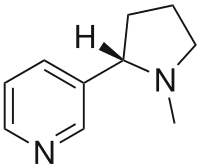
Photo from wikipedia
INTRODUCTION The first lineage separation in mammalian development occurs when totipotent cells of the zygote give rise to the inner cell mass and the trophectoderm. The lineages are strictly separated… Click to show full abstract
INTRODUCTION The first lineage separation in mammalian development occurs when totipotent cells of the zygote give rise to the inner cell mass and the trophectoderm. The lineages are strictly separated by an epigenetic barrier. In vitro derivatives of these lineages embryonic stem cells (ESC) and trophoblast stem cells (TSC) are used to study the requirements needed to overcome the barrier in ESC to TSC conversion approaches. METHODS Different combinations of TSC transcription factors were induced in ESC for three days. Cells were kept in TS medium with fetal bovine serum (FBS) or the chemically defined TX medium. Obtained cells were analysed for OCT4 levels, TSC surface marker levels, expression of TSC markers and methylation status of Elf5, Oct4 and Nanog promoters. Further, long-term culture stability and in vitro and in vivo differentiation was tested. RESULTS Overexpression of Gata3, Eomes, Tfap2c, Ets2 and Cdx2 in ESC resulted in induction of TSC fate. Overexpression of Cdx2 or four factors (Gata3, Eomes, Tfap2c and Ets2) resulted in complete conversion only when cells were cultured in TX medium. The obtained induced TSC (iTSC) display characteristics of bona fide TSC in terms of marker expression and promoter methylation patterns. The generated converted cells were shown to display self-renewal and to be capable to differentiate into TSC derivatives in vitro and in vivo. CONCLUSION Gata3, Eomes, Tfap2c, Ets2 and Cdx2 overexpression in ESC resulted in stable iTSC fate independent of culture conditions. For four factors or Cdx2 alone, TX medium is required for complete TSC conversion.
Journal Title: Placenta
Year Published: 2020
Link to full text (if available)
Share on Social Media: Sign Up to like & get
recommendations!